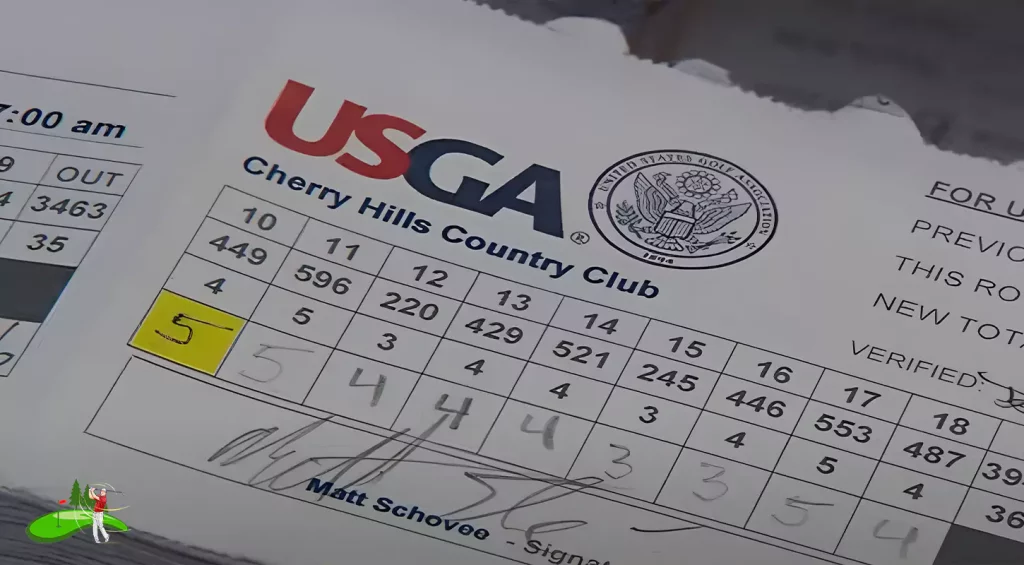What is match play in Golf?
Golf can be played in different formats, one of the most exciting and competitive of these formats is Match play. In this article, we will discuss what is match play in golf, its history, rules, and different strategies.
History of Match Play in Golf
Match play is one of the oldest forms of golf competition, with its roots dating back to the 16th century in Scotland. Before match play was introduced, golfers would often compete in one-on-one matches, with each player putting up a prize for the winner to take home. These early matches had the same format as today’s golf competitions. They often played over 18 holes, and the player with the lowest score at the end of the round was declared the winner.
Later these competitions were named Matchplay, and it evolved into a more structured format, with players competing in rounds of 18 or 36 holes, and brackets being used to decide which players advanced to the next round. Golfers has played Matchplay competition in many of the most prestigious golf tournaments in the world, including the Ryder Cup, the Solheim Cup, and the WGC-Match Play Championship.

Rules of Match Play in Golf
As in match play, players compete against each other on a hole-by-hole basis, with the winner of each hole receiving some points. The points add up throughout the game and the player with the most points at the end of the round or rounds is the winner.
There are some important rules to keep in mind when playing match play. First, all players must always play the ball as it lies, meaning they cannot move the ball or improve their lie unless the rules of golf allow it. Secondly, a player is not allowed to concede a hole until his opponent has had a chance to play his shot.
The most important rule in Match play is the concept of “dormie”. Dormie occurs when a player is up by the same number of holes that are left to play. For example, if a player is up by two holes with two holes left to play, they are said to be “dormie two”. And if the player wins the next hole, they win the Match play. If the opposing player wins the next hole, the match goes to the final hole. If the match is tied after completing 18 holes, extra holes are played until a winner is declared.
Strategies for Match Play in Golf
Match play requires a different set of strategies than Stroke play. As in stroke play the goal is to shoot the lowest score from other players. While in Match play, the goal is to win as many holes as possible to win the game. Which means players need to be more aggressive in the game.
For example, if you are a strong putter, you may want to be more aggressive on the greens, in this way, you’ll be confident that you have a good chance of making your putts. Conversely, if you struggle with the driver, you may want to play conservatively off the tee and use a shorter club to keep the ball in play.

Another important strategy in Match play is to be aware of your opponent’s strengths and weaknesses. For example, if you know that your opponent struggles with bunker shots you may want to try to hit your approach shots to greens that are protected by bunkers. On the other hand, if your rival is a long hitter, you should keep the ball in play and avoid getting into a long-driving contest with them.
How to win Match play in golf
A winner is determined when the opponent can no longer tie or win the match. Even if he were to win all the remaining holes, or when a player wins the maximum holes.
Players’ rights and responsibilities
Like in every game in Matchplay, players have both rights and responsibilities to ensure that the game has fair play. Here are the most important ones:
Their Rights:
The players have the right to choose to play first or second at the start. They can concede a hole at any time during the match. Also, they have the right to ask an opponent to remove an obstruction. Such as a cart, that is interfering with the stroke. Any player can receive a ruling from a rule official or referee on any question that arises during the match. Another important right is to have a caddie or partner to assist in carrying or handling equipment.

Their Responsibilities:
Every player’s responsibility is to know and follow the rules of the game. Another responsibility is to keep an accurate scorecard and report any errors to the opponent. An important responsibility is to not give advice to one’s opponent or touch their ball without their permission. The responsibility is to be respectful to opponents and everyone else on the course.
The Appeal of Match play Golf
One of the primary appeals of match-play golf is the “head-to-head” nature of competition. In this appeal, instead of playing against the entire field, players focus on beating their opponents one-on-one. This creates a more intense experience that can be exciting and engaging for players and the crowd watching.
Matchplay also allows players to strategic play and risk-taking. As each hole is its competition, players can make decisions based on their opponent’s strategy or weakness. This can lead to players taking risks to gain an advantage over their opponents.
Whether you are a beginner or a professional player, match play provides a fun and challenging way to compete against each other.

How Match play differs from Stroke play
Match play and stroke play are two different but unique formats of golf. Each format has its own set of rules and strategies. These are some main differences between match play and stroke play:
Scoring:
In Matchplay, each hole has its own separate value and it’s like its own match, the winner of each hole gets a set point. The team with the most points at the end of the game wins it. While in stroke play, the total number of strokes taken over an entire round is counted, and the team with the lowest total score wins.

Strategy: In match play, players can be more aggressive and take risks as they are taking one hole at a time. On the other hand, in stroke play, players balance their risk-taking with consistency over the entire round.
Concessions: In Matchplay, players can concede a hole at any time in the match, this means they give up the hole and move on to the next hole. Meanwhile, in stroke play, there are no concessions, so players must play every hole to completion.
Overall, Matchplay and Strokeplay offer challenges and strategies, and both formats are popular and enjoyable.
Conclusion
Golfers are playing Match play for centuries at all levels of the game. It does not matter if you are competing in a local club championship or watching the Ryder Cup. Match play provides a more challenging and competitive game than stroke play. As it requires players to be more strategic and aggressive in the game. So, by understanding the rules and strategies of Match play, golfers like you can improve and win.







